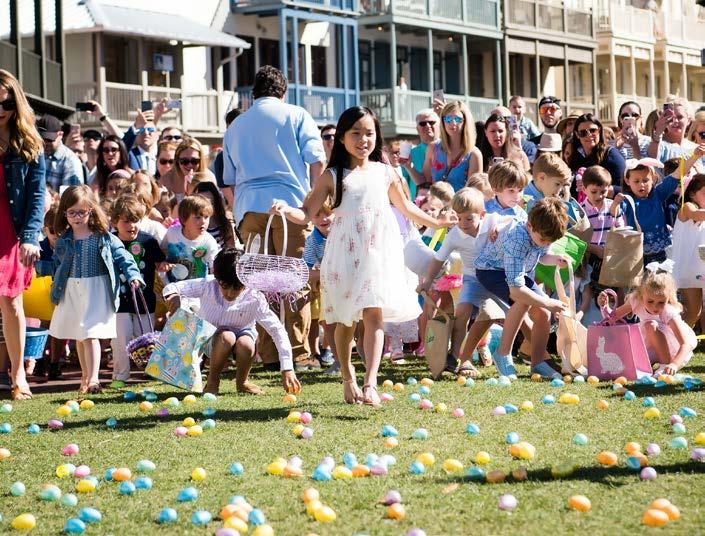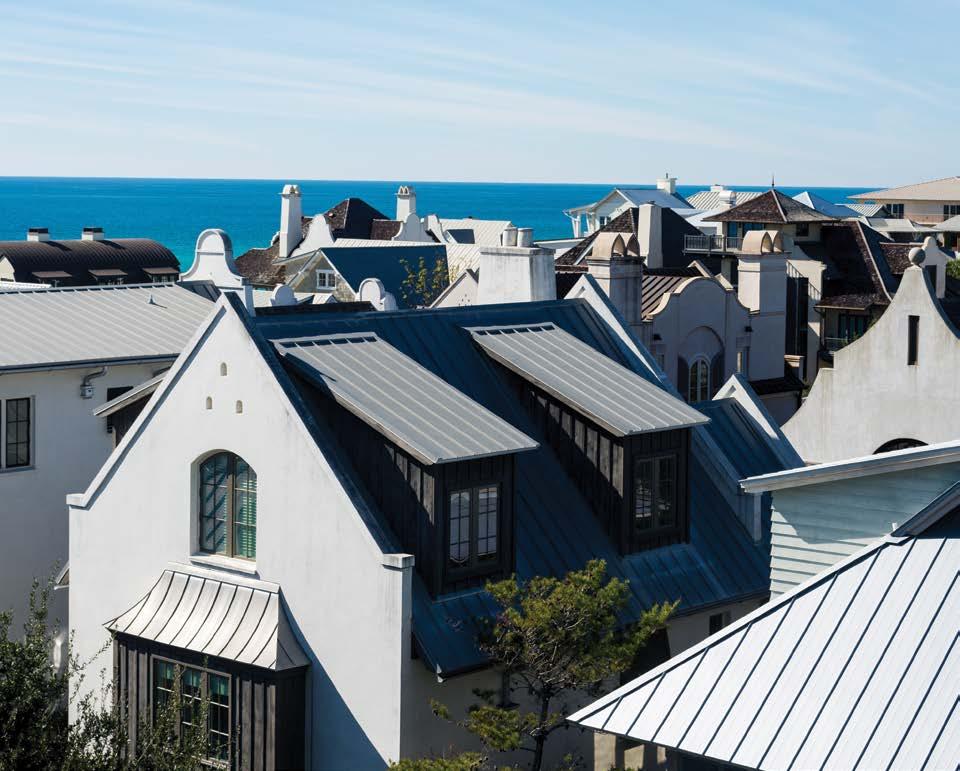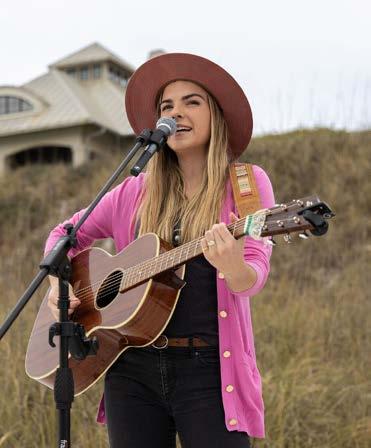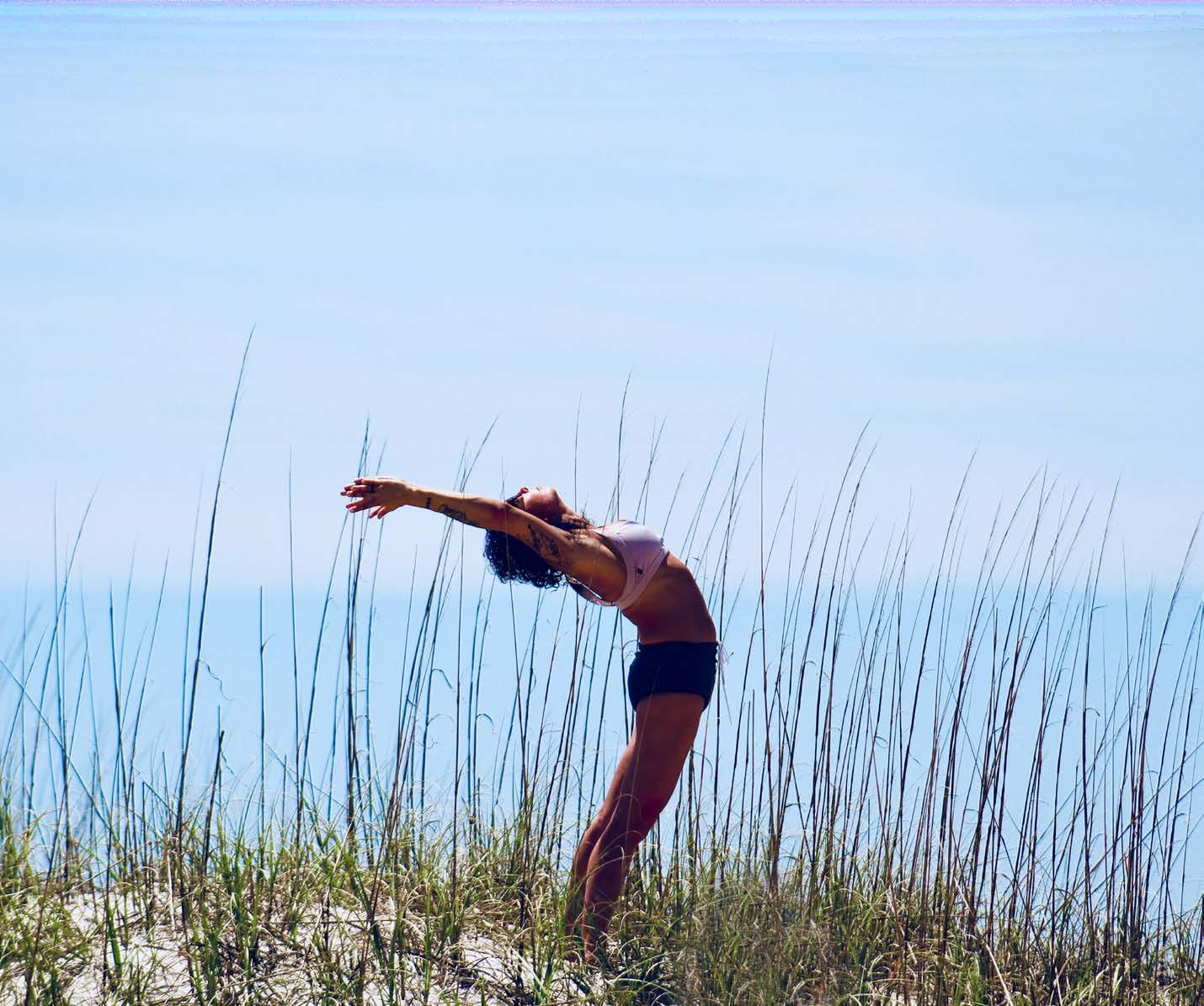
7 minute read
The Ancient Horticulturist: Needs Vs. Wants
The Ancient Horticulturist: Needs vs. Wants by Susan Broussard
S YOU RELAX either on the beach or your front porch, I hope your mind is melding with the sounds wafting through Rosemary Beach. I’m sure your mind isn’t planning your spring cleaning chores. A
Spring cleaning is a phrase that brings to mind the beating of dusty rugs and Windexing of grimy windows. Neither of which is fun. Productive, but not fun. For me, the thought of spring cleaning guides me into the garden, and that is
wondrously enjoyable. Let it be said, my house is on its own. Dust bunnies do not fear me, and I do not seek them out. In fact, I fear them. They have grown into ravenous cowsized dust rabbits. Therefore, I retreat to the outdoors.
There are always a multitude of tasks needing completion in the garden this time of year. Where to begin? First on the list is a walkabout through your garden. Take stock. Stroll through your yard with a morning cup of coffee, an afternoon glass of iced tea, an evening goblet of wine, or a Bloody Mary (any time of day will do). Do not walk fast so as to not slosh your liquid of choice. The slow pace gives you time to survey your garden, mentally taking note of its needs and wants. Leaves need to be raked. Weeds need to removed. Mulch needs to spread. Plants need to be planted. While lowering your blood pressure and enjoying your favorite beverage, you have identified a starting point. A place marker for what you need to attack. Let me soften that approach. A place marker for what you want to kick into compliance.
Before planting, clean out or cover up the weeds. If your garden is small enough, pulling the unwanted plants is the easiest procedure. If you have a larger garden or a plethora of offending plants, mulching may be the way to go keeping the weeds at bay. Mulching can cover a larger area. If you are raking up leaves in your yard, don’t bag and throw away. Push the leaves into your flower beds. No nearby trees to provide that free mulch? There are several choices of mulch for sale, but if you are choosing between pine bark and pine straw, go with the pine straw. My bug lady (Yes, I said bug lady) points out that pine straw does not harbor termites where as pine bark will. Termites are not allowed near my home. I definitively choose pine straw. However before I distribute the pine straw, I lay down a layer of newsprint. Since we support and receive a copy of our local newspaper every morning, there is a continuous supply. The mulch and newsprint will eventually break down adding organic matter to the bed.
Once the beds are weeded and mulched, it’s time to clear out the inventory of the plants that have been hoarded in black plastic pots behind the garage. I’m pretty sure the plants are half dead after living in the confinement of black plastic for anywhere from a few months fo a few years. Do them a favor. Find that perfect spot while on your walkabout. Remember to check the growing requirements. Does it need shade, sun or something in between? Does it need eight inches or eight feet between plants? Audition the plants in their prospective place. Do the eye test making sure the color combinations are pleasing to look at. Planting bright orange nasturtium and neon pink petunia mix side by side may not be the look you want in your garden. Even though they have the same planting requirements, do they really need to be next to each other? Think flaming redhead wearing bright pink lipstick. Maybe that redhead would look better in bright pink shoes instead of fuchsia lips. Put some space and a coordinating hue between the clashing colors. There are several books written on plant combinations, so my suggestion is to head to the library for inspiration.
Let’s say while you are surveying your garden with libation in hand, you find a plant that is not in the right place. It looks puny and poorly. Too dry. Too wet. Too much sun. Too much shade. Perhaps you decide to move it to a better spot. Too late! Plants really should be moved in the fall/ winter season giving them time to establish a good root system before the heat of the summer. However if the plant is in decline because of location and must be moved, remember to water it well once a week through the summer into next fall. It would also help to say a prayer each morning to St Fiacre, the patron saint of gardeners. If the moved plant
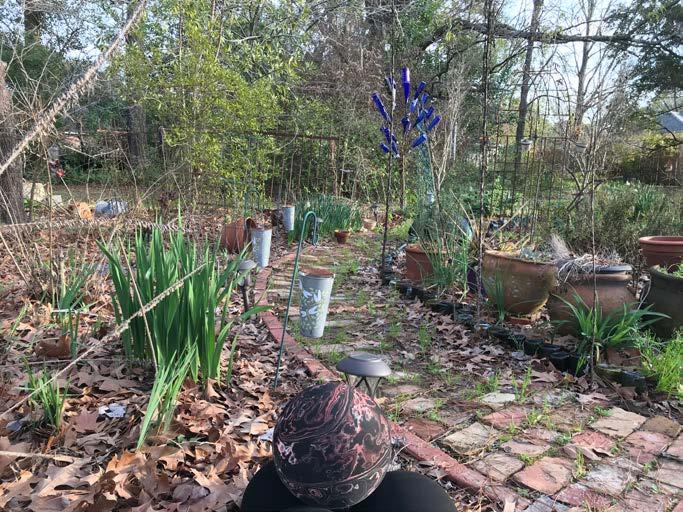
passes on to the great garden in the sky, I offer my condolences.
Now here comes the fun part. Wants. Finish spring cleaning with a run to the nursery to pick up a few more plants because who doesn’t want more plants? On my most recent visit to my favorite local nursery/hardware store/gathering place for likeminded garden geeks, I discovered Scabiosa columbarium ‘Butterfly Blue’ or pin cushion plant. It’s a small mounding perennial, 12 to 15 inches across with frothy blue flowers. According to the literature, it is reported to bloom April until frost. What a coup! A place has already been set in my butterfly garden. Even though I have a tendency to promote native plants, I know this lovely little lavender blue flower is not native to our area. It’s not native to North America. It’s not even native to the Western Hemisphere. But, hey, I really want it.
Susan has now joined the 21st Century and opened an Instagram account. Check out what’s blooming in her garden and surrounding area @susanmbroussard.
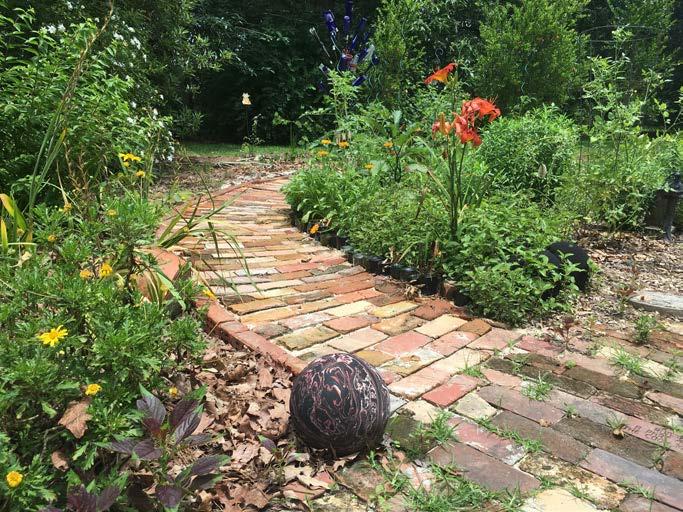
SPRING CLEANING, BEFORE + AFTER:

PROTECTING OUR NESTING SEA TURTLES
Sea turtle nesting season runs from May 1 through October. Please help these beautiful creatures survive by following the clean, dark and flat rules.
CLEAN: Remove all of your belongings, including trash, when you leave the beach.
DARK: Artificial lights distrub nesting sea turtles and hatchlings. Turn off all lights on or near the beach and close to all curtains in beach facing windows.
FLAT: Please knock down sandcastles and fill holes when you leave the beach.
MORE DO’S AND DON'TS FOR SEA TURTLE NESTING SEASON
DO NOT shine any light on the sea turtle and/or its face. The light may cause the female to abort the nesting process, or other sea turtles nearby may be discouraged from nesting if there are lights on the beach. If you are using your turtle safe filter over the lens of your flashlight, you should still refrain from shinning the light directly at the face of an adult or a hatchling.
DO watch from a distance. Stay clear and out of sight of the turtle. Stay behind the turtle and remain as still and quiet as possible until she begins laying eggs; otherwise you may scare her back into the sea.
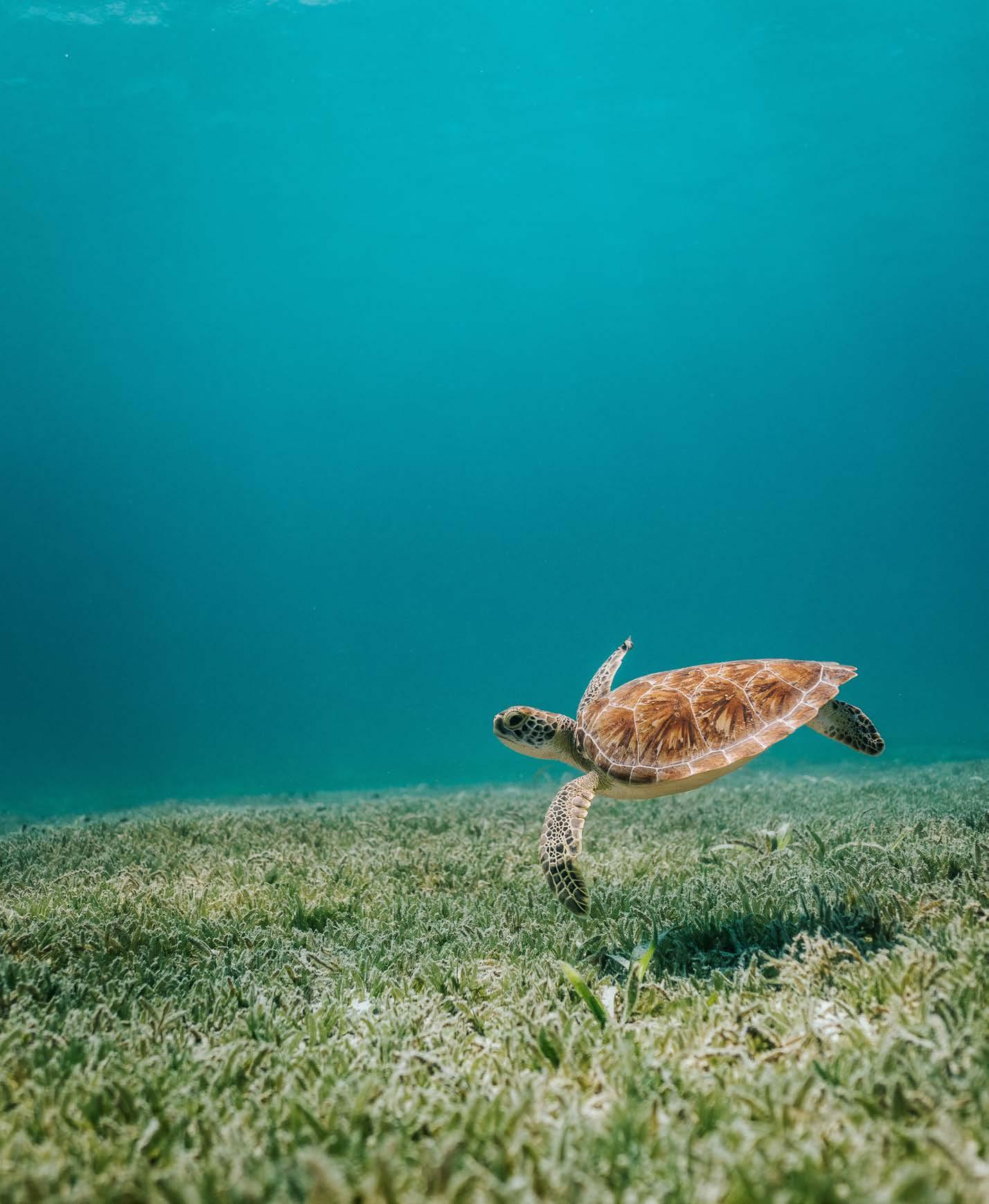
DO NOT take pictures using a flash, including camera phones. This high-intensity light can be even more disturbing than flashlights.
DO NOT touch or handle the sea turtle. In addition to being illegal, you may injure the turtle or cause her to leave without completing the nesting process.
DO NOT stand in the turtle's path to the ocean.
DO NOT handle sea turtle eggs or put anything into the nest. You can introduce bacteria or injure the eggs.
DO watch from a distance and remain quiet and still if you encounter hatchlings emerging from the nest. Keep all lights off.
DO leave the hatchlings in their nest and allow them to emerge and crawl to the water on their own. Scientists believe this crawl to the water is important and imprints the location of that particular beach on the hatchlings brain. Adult female turtles will return to the same beach they hatched from to lay their eggs.
DO NOT disturb tracks left by adult or hatchling turtles. Researchers use the tracks to identify the species of turtles that nested, as well as to find and mark the nests .

